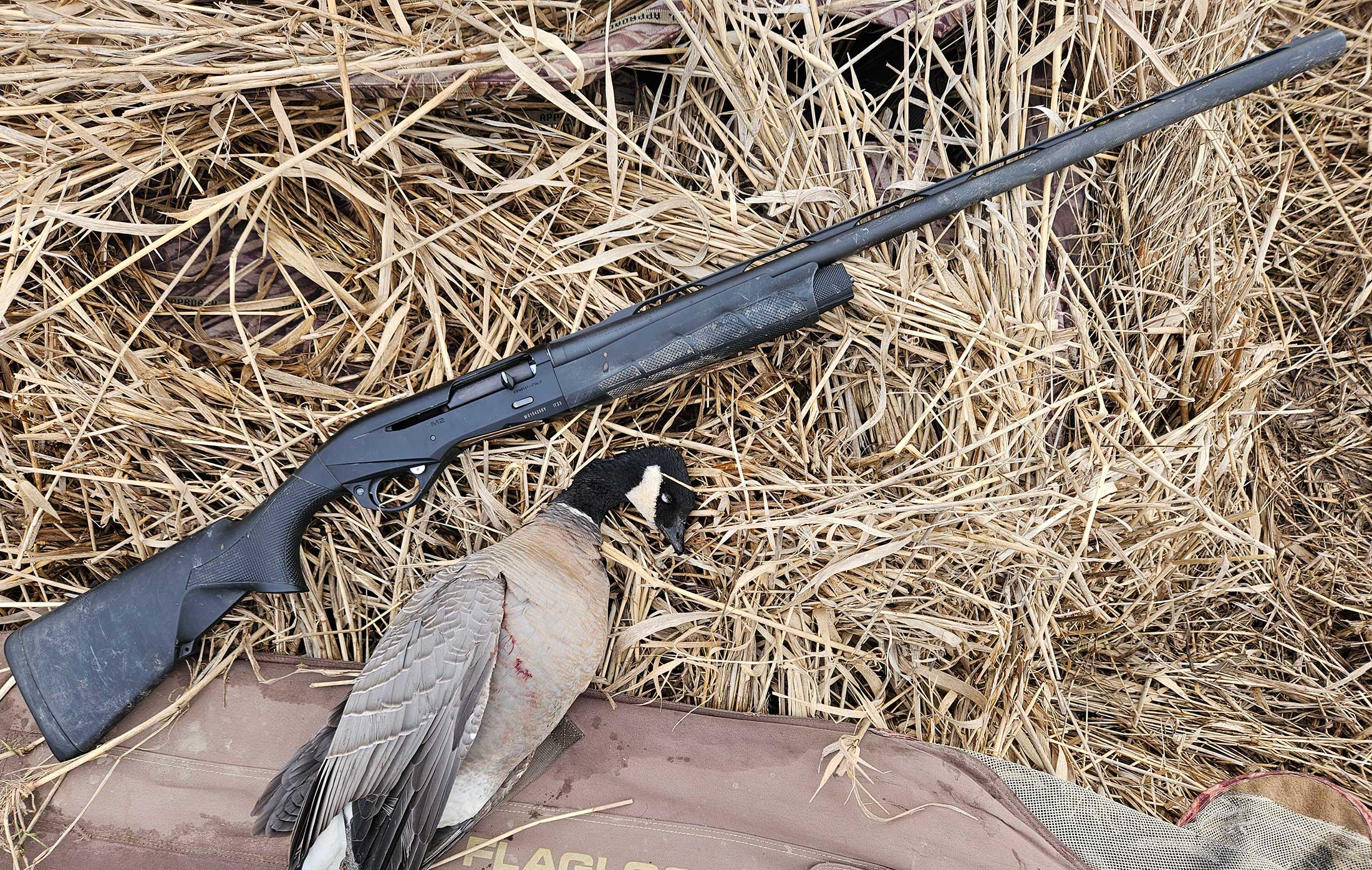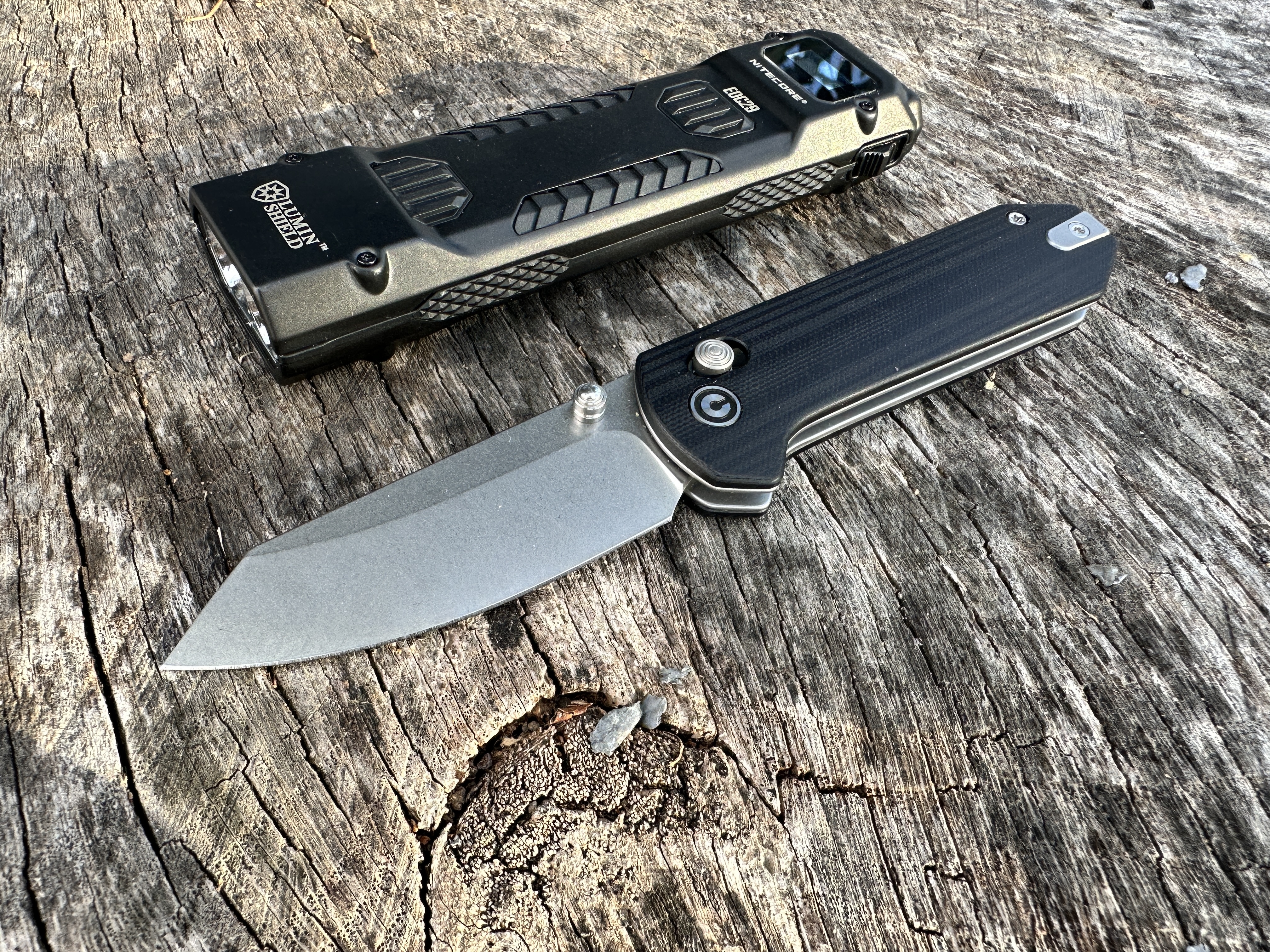Benelli M2 Shotgun Review: The Ultimate Mid-Priced Semiauto

We may earn revenue from the products available on this page and participate in affiliate programs. Learn More ›
In its nearly 25 years of existence, the Benelli M2 made the transition from high-tech replacement for the M1 to Benelli’s price point semiauto. While that might sound like a demotion, it’s more like a distillation: the M2 is the perfect choice for the hunter who wants a rugged, reliable inertia semiauto without extras like carbon-fiber ribs and 3 ½-inch chambers. In 12- and in 20-gauge, the M2 cycles a wide range of 2 ¾- and 3-inch loads with unfailing reliability, a trait that has earned it fans among both hunters and competitors.
Even as Benelli’s entry-level gun, it still sells for over $1200, so you should expect a lot. The M2 delivers.
Photo by Phil Bourjaily
See It
Inertia Advantage
Like all Benelli semiautos (except the gas-operated tactical M4) the M2 works on the principle of inertia. When the gun is fired and moves back under recoil, the “floating” bolt remains in place, and the rotary bolt head locks even more tightly into the barrel extension. At the same time, a stout spring inside the two-piece bolt compresses, then, after the gun fires, the spring opens, throwing the bolt back to eject the spent shell and to pick up a fresh one as the return spring in the stock pushes the bolt back into battery.
The system made a brief appearance in the early 20th century as the very odd-looking Swedish Sjogren Normal, but for practical purposes, inertia guns were invented in Italy in the 1960s when the motorcycle-making Benelli family met inventor Bruno Civolani.
Early Benellis locked up by means of a bar in the bolt that tilted to lock into the receiver. That design was supplanted by the “Montefeltro Super 90” rotary bolt in 1986, seen first in the M1 Super 90. The bolt had three lugs that locked into the barrel itself, meaning that the gun’s receiver no longer bore any of the stresses of the lockup. The new bolt allowed Benelli to make lighter receivers to looser tolerances. It also had an action that stayed cleaner, longer because it didn’t use gas for cycling. The Super 90 version of the inertia system became the basis for Benelli’s legendary reliability and durability.
Birth of the M2
Americans discovered the M1 Super 90 after Heckler and Koch began importing the guns to the U.S. in the 80s, although it would be the debut of the Super Black Eagle in 1991, that started the Benelli buzz over here. Beretta acquired Benelli in 2000, forming Benelli USA, and raising the brand’s profile in the states. As part of that effort, they gave the lineup a makeover. The M2 was born in 2004, and the M1 was phased out.
The M2 had more plastic parts than the M1, and it was lighter. It was updated with the latest Benelli tech: the barrels were cryogenically frozen to remove stresses in the metal and make them easier to clean. The Crio barrels came with lengthened Crio chokes. Whether the freezing helped or not is open to debate, but the new chokes definitely improved patterns.
The M2, along with the Super Black Eagle II, also featured a new ComforTech stock. The rap on inertia guns is that they kick hard, which they do. Benelli engineers designed the ComforTech stock that not only had soft cheek and butt pads, but also a series of vibration-dampening of sorbothane chevrons in the stock. It looked gimmicky, but it worked.
As Benelli promoted their guns, no one played a bigger role than exhibition shooter Tom Knapp. The M2 was a staple in Knapp’s shows and sometimes the star. Oct 20, 2004, Knapp threw and broke a record of ten clay targets in 2.2 seconds. He accomplished the feat with an M2 that came, as he exclaimed after setting the record: “Off the shelf, out of the box, into my hands.” Hunters and shooters, even waterfowlers who would never load more than three shells, took notice.
M2 Variants
The M2 came in synthetic, camo and walnut, although the walnut models would eventually be dropped as the gun settled into its workhorse identity. Pistol-grip turkey models came soon after. The first time I shot an M2 was on a turkey hunt in Texas. With a Swarovski dangerous-game scope with an illuminated reticle on top, it made a lethal turkey gun. I bought my own M2, an all-black model not long after for waterfowling. It was short, with a 26-inch barrel, and light, at under 7 pounds, both traits I didn’t think I liked in a duck gun but I loved it.
The M2 was made in field, slug, tactical, and 3-gun versions, as well as in special Performance Shop models made in collaboration with Rob Roberts Gunworks for turkeys and waterfowl.
The short-lived “American” model, made in 2010-2011 without ComforTech and with a lower price-tag, foreshadowed the current spot the M2 would occupy in the Benelli lineup. As Benelli added more models, the M2 was finally relegated to the bottom of the line, price-wise.
M2 Makeover
In 2023, the M2 received a makeover, one that addressed, in my view, the gun’s two weaknesses. The Achilles’s heel of the Super 90 bolt is the click. The very rotary bolt that locks tighter as the gun recoils, that contributes so much to the gun’s speed and reliability, can also be accidentally bumped out of battery with ease. Shut the bolt slowly to keep quiet on a turkey hunt, or snag it in camo netting or a ghillie coat, as I have, and when you pull the trigger, the gun goes “click,” not “bang.” It doesn’t happen often, but it happens at the worst times. I loved my M2 until the first time it clicked, and I was traumatized enough that I sold it. I had another click with a borrowed 20-gauge waterfowl M2 and the mallards nearly landed in the decoys and then flew off unscathed only reinforced my feelings: the click was a deal-breaker.
The new M2 features Benelli’s Easy-Locking bolt, a design introduced in the Ethos in 2014. A detent pin and spring inside the bolt nudge it into battery if it’s bumped out. It works wonderfully well. To my mind, it’s the last, necessary improvement on inertia semiautos.
The other change for the better in the new model is a softer magazine spring and a two-piece shell latch. Loading M2s either in high-volume situations or in the cold used to be an ordeal. High-volume dove shooters, who often choose Benellis, armored their thumbs with athletic tape. That’s no longer necessary, and even when cold saps the strength from my thumb I can easily slide shells into my M2.
Read Next: Best Duck Hunting Shotguns
Final Thoughts on the Benelli M2
Currently, M2s are made in 12- and 20-gauge synthetic-stocked hunting models as well as 12-gauge 3-gun and tactical models. After the makeover, I am an M2 owner again. From now on, there will always be an M2 among my duck guns, and I am by no means alone in that sentiment. While the old M2s are great, the new ones are even better and they can still be had at reasonable prices.
Read the full article here









